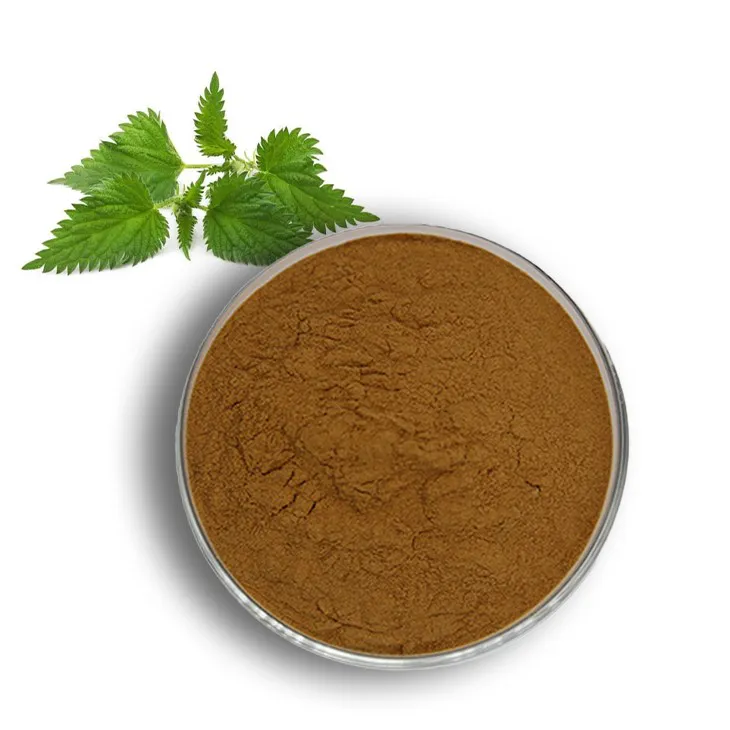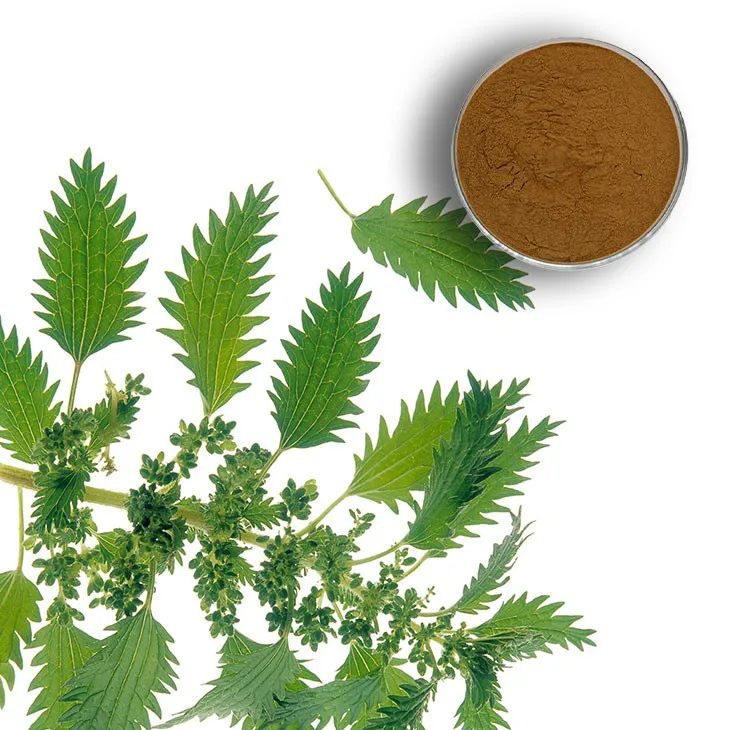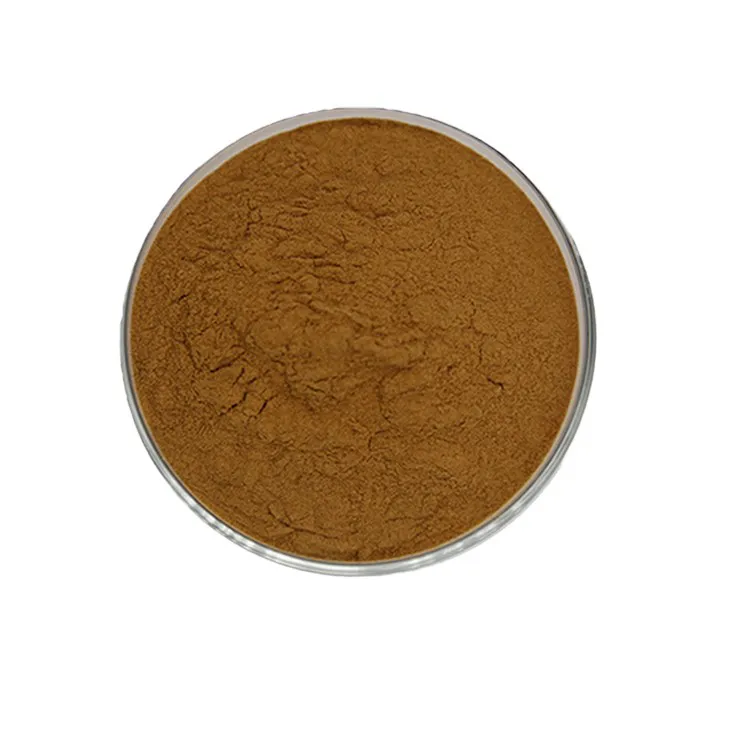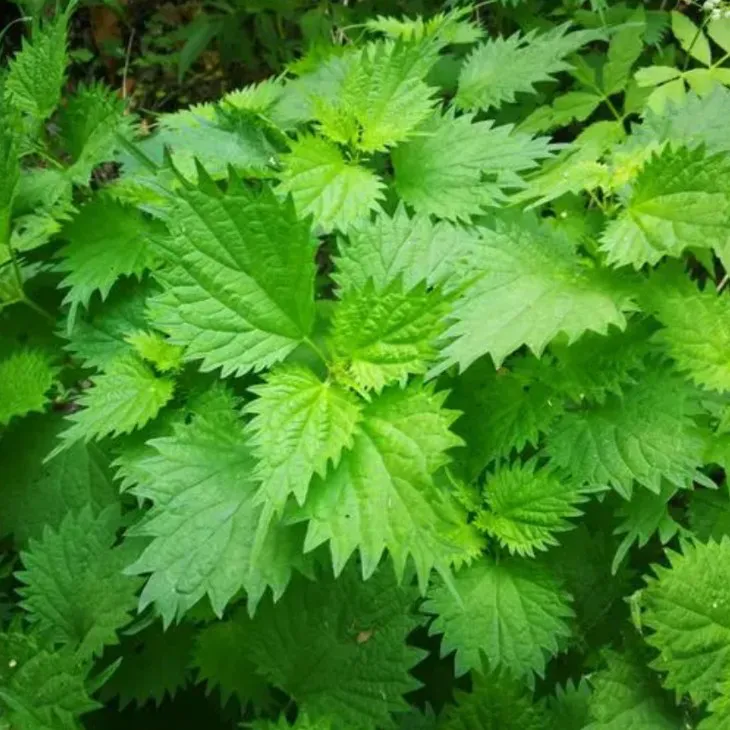- 0086-571-85302990
- sales@greenskybio.com
Extraction process of nettle root extract.
2024-11-29

1. Introduction
The Nettle Root Extract has been gaining increasing attention in various fields, such as in the pharmaceutical and cosmetic industries. Nettle root contains a rich variety of bioactive compounds, which make it a valuable raw material for extraction. However, the extraction process is a complex procedure that requires careful handling and precise techniques to ensure the quality and effectiveness of the final extract.

2. Collection of Nettle Roots
The first step in the extraction of Nettle Root Extract is the collection of fresh nettle roots. This process is crucial as the quality of the roots directly affects the quality of the extract.
2.1. Identification of Nettle Plants
Before collection, it is essential to accurately identify the nettle plants. Nettle plants can be recognized by their characteristic features. They typically have serrated leaves and stinging hairs on the stems and leaves. Proper identification helps to avoid collecting the wrong plants, which could lead to a sub - standard or even dangerous extract.
2.2. Selection of Suitable Areas
Nettle plants grow in various habitats, but for the purpose of root collection, areas with clean soil and minimal pollution should be chosen. Roots collected from polluted areas may contain harmful substances that can contaminate the extract. For example, areas away from industrial sites and heavy traffic zones are more preferable.
2.3. Harvesting Time
The time of harvesting also plays an important role. Generally, nettle roots are best harvested in the fall or early spring. At these times, the roots are believed to have a higher concentration of bioactive compounds. Harvesting at the wrong time may result in roots with lower potency.

3. Washing of Nettle Roots
Once the nettle roots are collected, they need to be washed thoroughly. This is a multi - step process aimed at removing dirt, debris, and other contaminants.
3.1. Initial Rinse
The first step is an initial rinse. The roots are placed under running water to remove large pieces of dirt and loose debris. This is a relatively quick process but is important to get rid of the most obvious contaminants.
3.2. Soaking and Scrubbing
After the initial rinse, the roots are soaked in clean water for a period. During this time, gentle scrubbing may be carried out to remove stubborn dirt and any remaining debris. This step requires careful handling to avoid damaging the roots, as damaged roots may release unwanted substances during extraction.
3.3. Final Rinse
After soaking and scrubbing, a final rinse is performed under running water. This ensures that all the loosened dirt and any residues from the soaking water are removed. The roots should be clean to the touch and free from any visible contaminants.

4. Drying of Nettle Roots
Drying the nettle roots is an important step following washing. It helps in preserving the roots and preparing them for extraction.
4.1. Air Drying
One of the simplest methods of drying is air drying. The washed roots are spread out in a well - ventilated area, away from direct sunlight. This method is natural and cost - effective. However, it may take a relatively long time, especially in humid environments. During air drying, the roots should be turned regularly to ensure even drying.
4.2. Oven Drying
Oven drying is a quicker alternative. The roots are placed in an oven at a low temperature (usually around 40 - 50°C). This method reduces the drying time significantly but requires careful monitoring to prevent over - drying or burning of the roots. Proper temperature control is crucial to maintain the integrity of the roots and their bioactive compounds.
4.3. Dehydrator Drying
Using a dehydrator is also an option. Dehydrators are designed to remove moisture evenly from the roots. They can be set to specific temperatures and drying times. This method is more precise than air drying and can be faster than oven drying if used correctly.

5. Extraction Methods
After the roots are dried, the extraction process can begin. There are several methods available for extracting Nettle Root Extract, each with its own advantages and limitations.
5.1. Maceration
Maceration is a traditional extraction method that is still widely used today. In this method:
- The dried nettle roots are placed in a container.
- A suitable solvent, such as ethanol or water, is added to the container. The choice of solvent depends on the desired compounds to be extracted and the intended application of the extract.
- The roots are then soaked in the solvent for a period, usually several days to weeks. During this time, the solvent penetrates the root tissues and dissolves the bioactive compounds.
- After the soaking period, the solution containing the dissolved compounds (the macerate) is separated from the remaining root material through filtration or decantation.
5.2. Soxhlet Extraction
Soxhlet extraction is a more advanced and efficient method:
- The dried nettle roots are placed in a Soxhlet thimble, which is then inserted into a Soxhlet apparatus.
- A solvent is continuously recycled through the apparatus. The solvent vaporizes in the distillation flask, rises through the condenser, and then drips back onto the root material in the thimble.
- This continuous process of solvent refluxing allows for a more thorough extraction of the bioactive compounds from the roots compared to maceration.
- Once the extraction is complete, the solvent containing the extract is collected for further processing.
5.3. Supercritical Fluid Extraction
Supercritical fluid extraction is a relatively new and innovative method:
- It uses a supercritical fluid, such as supercritical carbon dioxide (scCO₂), as the extracting agent. scCO₂ has properties between those of a gas and a liquid at certain conditions of temperature and pressure.
- The supercritical fluid can penetrate the root tissues more effectively than traditional solvents and can selectively extract specific compounds based on their solubility in the supercritical fluid.
- This method is considered more environmentally friendly as carbon dioxide is non - toxic and can be easily removed from the extract after extraction.
6. Refinement of the Extract
Once the extraction is complete, the resulting extract needs to be refined to ensure its purity and potency for various applications.
6.1. Distillation
Distillation is a common method used for refining the extract:
- The extract - solvent mixture is heated in a distillation apparatus. The solvent, which has a lower boiling point than the bioactive compounds in the extract, vaporizes first.
- The vapor is then condensed and collected separately, leaving behind a more concentrated extract.
- Depending on the complexity of the extract - solvent system, multiple distillation steps may be required to achieve the desired level of purity.
6.2. Filtration and Clarification
After distillation, filtration and clarification are carried out:
- Filtration is used to remove any remaining solid particles or impurities from the extract. This can be done using filter papers, membranes, or other filtration media.
- Clarification processes, such as centrifugation, can also be used to further clarify the extract by removing any fine particles or emulsions that may be present.
6.3. Chromatographic Purification
Chromatographic purification is a more advanced technique for refining the extract:
- It involves separating the different components of the extract based on their differential affinities for a stationary phase and a mobile phase. For example, in high - performance liquid chromatography (HPLC), the extract is passed through a column filled with a stationary phase, and a mobile phase is pumped through the column.
- The different components of the extract interact differently with the stationary and mobile phases, resulting in their separation. This allows for the isolation and purification of specific bioactive compounds from the extract.
7. Conclusion
The extraction process of nettle root extract is a multi - step and complex procedure. From the collection of fresh roots to the final refinement of the extract, each step is crucial in ensuring the quality and effectiveness of the final product. With the increasing demand for natural products in various industries, the proper extraction of nettle root extract will continue to be an important area of research and development.
FAQ:
What are the initial steps in the extraction process of nettle root extract?
The process starts with collecting fresh nettle roots. Then these roots are washed several times to remove dirt and contaminants, followed by drying to preserve them.
What is maceration in the context of nettle root extract extraction?
Maceration is a traditional method in which the nettle roots are soaked in a solvent for a certain period for the extraction process.
How does Soxhlet extraction work for nettle root extract?
Soxhlet extraction is another method used for extracting nettle root extract. However, the specific details of how it works in this context involve a continuous extraction cycle using a Soxhlet apparatus. The solvent is repeatedly cycled through the nettle roots to extract the desired compounds.
Why is distillation necessary in the extraction of nettle root extract?
Distillation is necessary to refine the resulting extract. It helps in separating different components based on their boiling points, thus contributing to the purification process and ensuring the purity and potency of the nettle root extract for various applications.
What are the contaminants that need to be removed from nettle roots before extraction?
Before extraction, dirt is a common contaminant that needs to be removed from nettle roots. There may also be other substances such as small stones, pieces of plant debris, or any other foreign matter that could interfere with the extraction process or the quality of the final extract.
Related literature
- Studies on the Bioactive Compounds of Nettle Root Extract"
- "The Chemical Composition and Extraction Methods of Nettle Root"
- "Advanced Techniques in Nettle Root Extract Production"
- ▶ Hesperidin
- ▶ citrus bioflavonoids
- ▶ plant extract
- ▶ lycopene
- ▶ Diosmin
- ▶ Grape seed extract
- ▶ Sea buckthorn Juice Powder
- ▶ Beetroot powder
- ▶ Hops Extract
- ▶ Artichoke Extract
- ▶ Reishi mushroom extract
- ▶ Astaxanthin
- ▶ Green Tea Extract
- ▶ Curcumin Extract
- ▶ Horse Chestnut Extract
- ▶ Other Problems
- ▶ Boswellia Serrata Extract
- ▶ Resveratrol Extract
- ▶ Marigold Extract
- ▶ Grape Leaf Extract
- ▶ blog3
- ▶ blog4
-
Nature's Bounty Ginger Extract.
2024-11-29
-
Ginseng root extract manufacturers.
2024-11-29
-
Organic Olive Leaf Extract, Australia.
2024-11-29
-
The best organic green tea extract.
2024-11-29
-
Kupilu Extract
2024-11-29
-
Yellow Pine Extract
2024-11-29
-
Aminolevulinic acid
2024-11-29
-
Grape Seed Extract
2024-11-29
-
Cactus Extract
2024-11-29
-
Acai Berry Extract
2024-11-29
-
Clove Powder
2024-11-29
-
Golden Seal Extract
2024-11-29
-
Yam Extract
2024-11-29
-
Yohimbine Bark Extract
2024-11-29





















